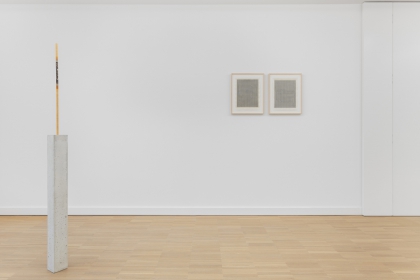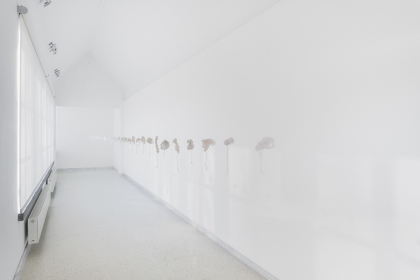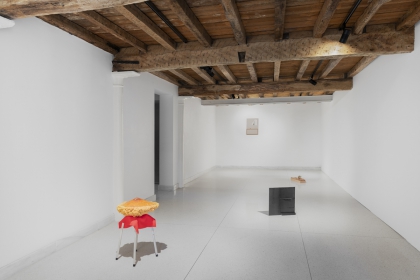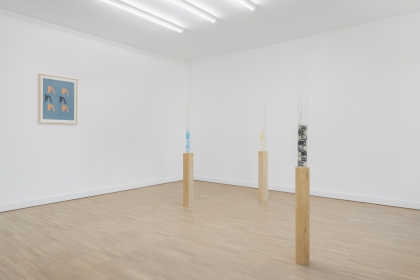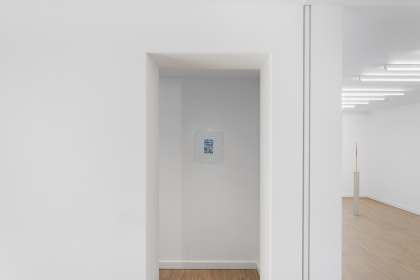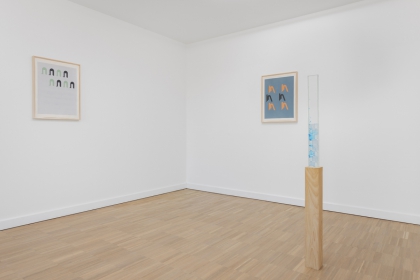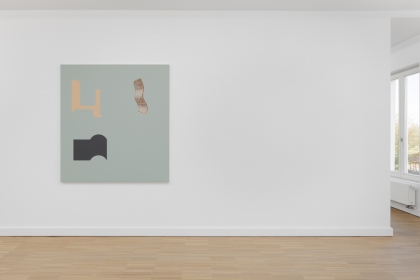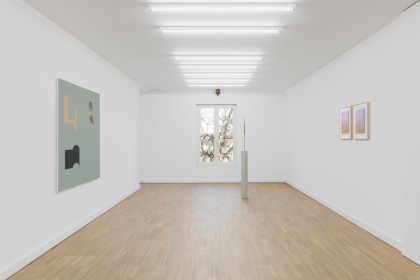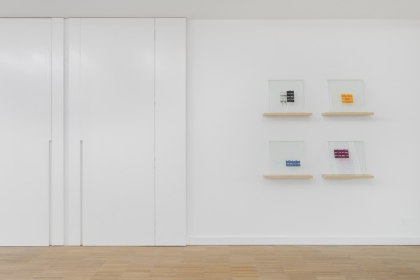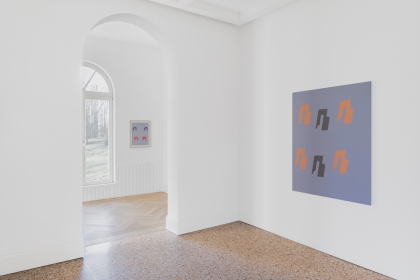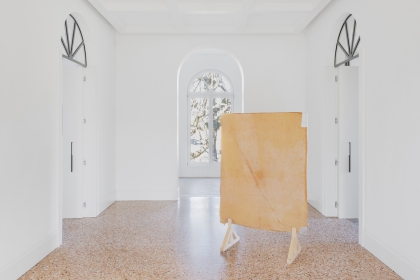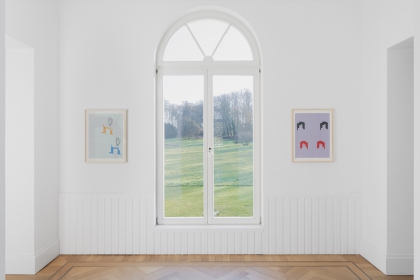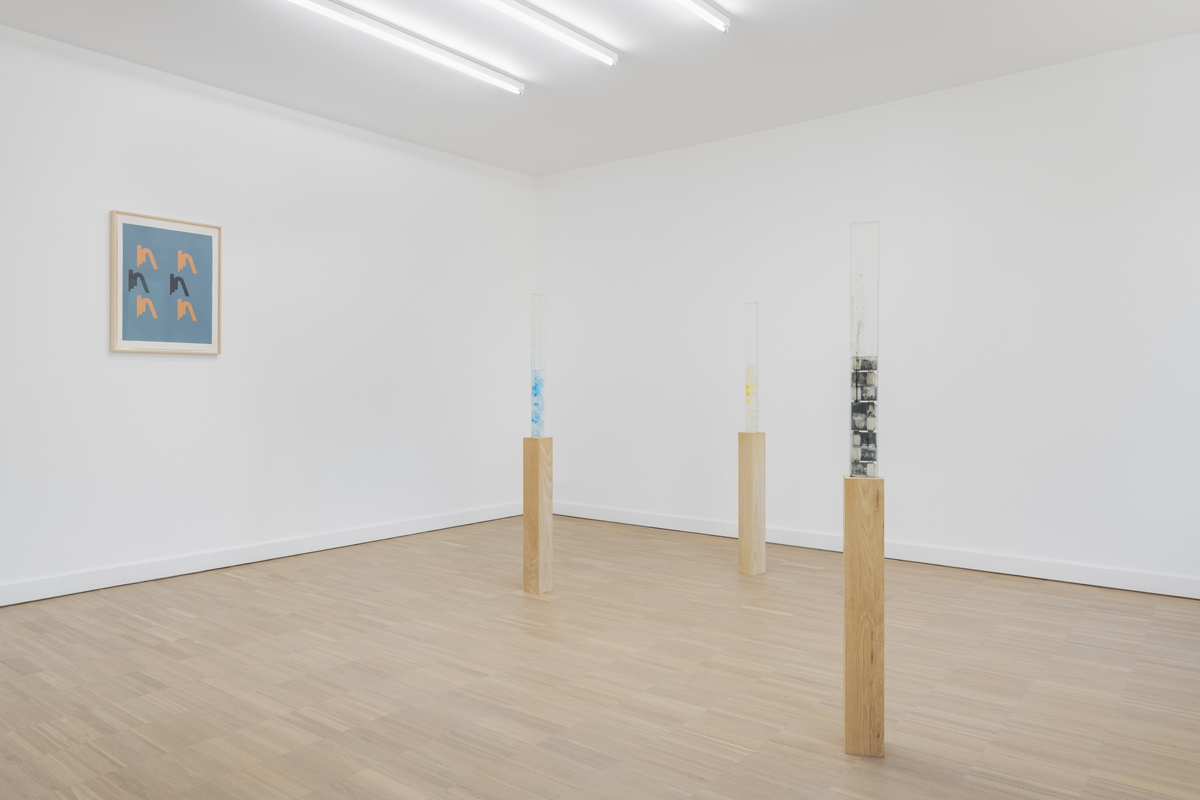
Time, after Time?
The title of this joint exhibition suggests that the element of time – from everyday experience to the passage of history – is a connecting theme in the recent work of the two young guest artists Maria Kley and Carlos Caballero, who have both undertaken a complex journey.
Maria Kley (b. 1981), initially trained as a fashion designer, is primarily inspired by people and their relationships. She has previously created a series of abstract portraits based on elements from the biographies of her models and their material traces. At Whitehouse Gallery, she mainly shows work with an autobiographical slant. The viewer does not always need to absorb the concrete story behind a piece, although it certainly helps to know exactly what the empty ink cartridges, Post-It notes or used (but hygienically washed) tampons represent, so as to better understand the work or the installation. The assemblages in the Serendip series, which betray remnants of earlier creative processes and archive material, reflect, in turn, upon working methods, the use of materials and serendipity. In this way, Maria Kley transforms the anecdotes that inspired her works into new and potential stories. Time has elapsed, from idea to sketch, and from beginning to elaboration. This gives rise to unique, tactile and personal works in the most literal, yet ambiguous, sense: they originate just as much from the concrete existence of the artist as from lives of the people with whom she has forged relationships.
The oeuvre of Carlos Caballero (b. 1983) appears to be just as enigmatic. The works he presents at Whitehouse Gallery seem to be rebuses whose solution is anything but evident. References to tangible reality or the everyday surroundings are scarce. At best, we perceive forms that are reminiscent of typographical symbols, hieroglyphs or letters from an (as yet?) non-existent alphabet. These are occasionally combined with organic forms, or perhaps they are signs that only hold the memory of meaning and resemblance, the threshold at which a reference to physical reality evaporates or dissolves, like a kind of forgetting? In earlier paintings, figures were erased or only the barest hint of an object left behind. In this tension between figuration and abstraction, one sees a whisper of Caballero's training as a graphic designer and academically trained painter in the Cuba of his youth. It is a residue from which he tries to forge a new, personal visual language. Just like Kley, Caballero experiments with elements such as time and (auto-)biography: many paintings are the product of diary annotations, while the rhythm and repetition of jazz also resound. Paradoxically, these works, which could be relics from an industrial society, were also created with the endless patience of the craftsman.
Eric Min, December 2019

